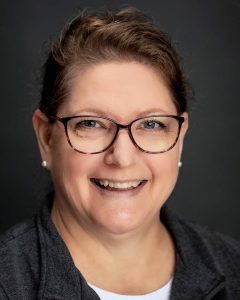
Brenda Reinert
Tomah Health Human Resources director Brenda Reinert says despite a Wisconsin Hospital Association (WHA) report that describes health care workforce challenges throughout the state, the environment is different at the Tomah hospital. “The workforce climate is difficult, but not as difficult for us as it could be,” said Reinert.
The WHA recently released 2025 Workforce report revealed that while some progress has been made in stabilizing workforce shortages, vacancy rates remain high across the state.
That’s not the case at Tomah Health. “We have had a vacancy rate of three percent for the last year and a half, if not longer, so our vacancy rate is considerably lower than any other health care institutions.”
Reinert cited several reasons for the positive workforce atmosphere. “For many years we have had a ‘grow your own’ program and it really has saved us with some of the workforce challenges that are facing health care right now. We very rarely post a registered nurse position for external applicants to apply. We fill them with internal applicants. Our climate is very different from other hospitals that maybe don’t do those programs,” she explained.
Reinert mentioned the hospital’s salary and benefit package and staff flexibility for accommodating a work life balance for staying ahead of workforce issues. “We are very creative when it comes to staffing solutions.” She said the hospital recently finalized a unique surgical tech program to help fill the historically hard to fill position. “We got this program approved so that we can provide on the job training for individuals to be an OR tech.”
She said the age of Tomah Health staff has placed the hospital in a good position. “Only four percent of our workforce is close to retirement age, so we are not looking at great number of retirements happening in the next five to 10 years. Our median employee age is 42, reflecting a young workforce which attracts young applicants.”
As Wisconsin hospitals work to attract new professionals, WHA officials are calling for action from policymakers, educators, employers, and health care professionals to combat the situation. “To keep pace with rising health care demands, we need to take immediate and sustained action to minimize barriers, foster innovation and support the development of a strong and sustainable workforce,” said WHA president and CEO Eric Borgerding. “Addressing these issues requires a collaborative effort from all stakeholders –policymakers, educators, and health care leaders alike.”
Reinert agrees with the state’s plan. “Expanding and supporting educational and occupational pathways is huge because we need to have more opportunities for individuals to get the training and the education that they need to step into these positions. But the first part is to inspire them in high school to want to go into that program,” added Reinert. She said her staff works with area colleges to offer clinical rotations and attends area job and career fairs to promote health care professions.
Read the 2025 WHA Workforce Report, HERE